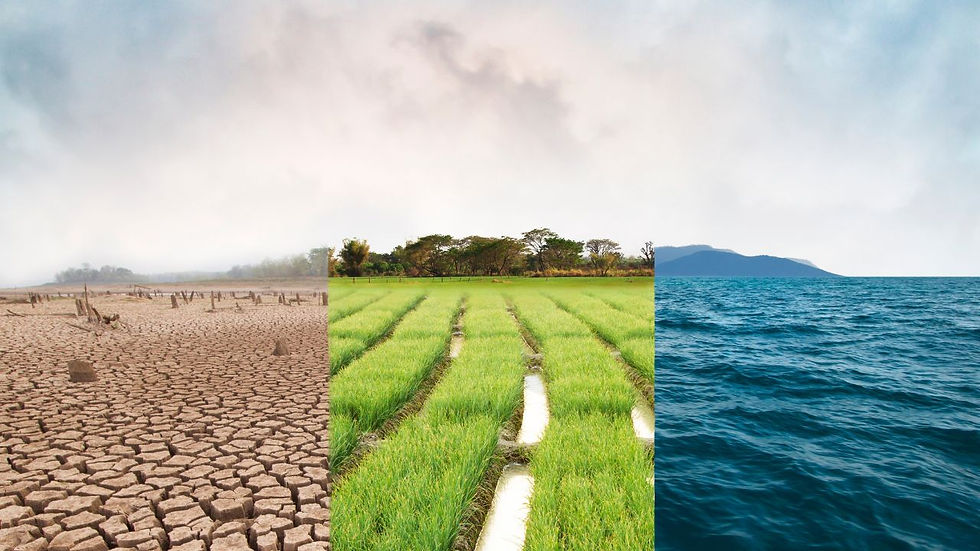Beyond the Factory Gates: How Wegovy’s Production Ties into Biodiversity
- AJ Hill Aesthetics

- Jul 24
- 3 min read
When people think about the environmental impact of pharmaceuticals, the focus often falls on emissions, waste, or packaging. But there’s another piece that deserves attention—biodiversity, and what’s at stake when production processes disrupt ecosystems.
With Wegovy now widely used for chronic weight management, its footprint stretches beyond clinical settings and supply chains. Like all medications, the story of its impact includes where and how it’s made—and what that means for the landscapes, species, and communities nearby.
How Medication Manufacturing Affects the Natural World

Pharmaceutical production doesn’t happen in a vacuum. It draws on resources—water, raw materials, energy—and can generate pollutants or alter land use in ways that put pressure on biodiversity.
In the case of Wegovy, the manufacturing process involves:
Advanced biotechnology and chemical synthesis
A significant amount of clean water and energy
Cold-chain logistics for global distribution
These steps may not seem directly tied to biodiversity loss, but the connection becomes clearer when you zoom out. Facilities require land. Energy consumption links back to extraction or grid use. Water-intensive processes can strain local supplies. And without careful waste treatment, residual chemicals may find their way into nearby ecosystems.
In regions where pharmaceutical plants operate near sensitive habitats, the risks go beyond abstract numbers. Pollutants can affect water quality. Light and noise from facilities can disrupt animal behavior. And unchecked expansion may lead to habitat fragmentation or species displacement.
While there’s no public evidence that Wegovy’s production has led to specific biodiversity loss events, the potential is real—and recognized by both researchers and environmental agencies.
What’s Being Done to Limit the Damage
Novo Nordisk, the company behind Wegovy, has made broad environmental commitments—including climate neutrality and waste reduction—but has also started integrating biodiversity concerns more directly into its practices.
In recent years, the company has:
Partnered with environmental consultants to map potential biodiversity risks around production sites
Transitioned some facilities to closed-loop water systems, reducing the strain on local freshwater sources
Worked to minimize land disturbance by locating new sites in previously industrial or low-biodiversity areas
Novo Nordisk also follows guidelines from the UN Convention on Biological Diversity and aligns with global frameworks like the Taskforce on Nature-related Financial Disclosures (TNFD), which encourage companies to assess and mitigate nature-related risks in their operations.
When sourcing materials, they’ve introduced vetting processes to ensure suppliers meet sustainability standards—avoiding practices like overharvesting, deforestation, or sourcing from high-risk biodiversity zones.
These measures don’t make the operation impact-free, but they’re part of a broader shift toward production models that do less harm to the ecosystems they exist within.
How Environmental Impact Assessments Fit In

One of the key tools used to assess and reduce harm to biodiversity is the Environmental Impact Assessment (EIA). These assessments look at everything from noise pollution and air emissions to land use changes and water runoff—evaluating how an operation might affect its surroundings before, during, and after it’s built.
Third-party EIAs conducted for Novo Nordisk’s facilities have, in several cases, recommended tighter water filtration controls, expanded buffer zones around green areas, and enhanced monitoring of local flora and fauna. These recommendations have reportedly led to real changes, such as:
Improved runoff management systems to prevent pharmaceutical traces from entering nearby waterways
On-site biodiversity gardens and buffer zones to support pollinators and small wildlife
Reduced lighting and night-shift disturbances near rural facilities
Though not all of these changes are specific to Wegovy, they affect the overall environmental behavior of the production sites involved in making the drug.
Why Biodiversity Deserves a Seat at the Table

The loss of biodiversity isn’t just an ecological concern—it’s a public health one. We depend on functioning ecosystems for clean air, drinkable water, and climate regulation. Pharmaceuticals that degrade these systems, even unintentionally, work against the broader mission of improving health.
As more people use medications like Wegovy, and as production scales up, the importance of monitoring those indirect impacts grows. It’s not enough to track emissions or packaging. Companies need to know what their operations are doing to the forests, wetlands, and species living nearby—and do something about it.
Stakeholders are beginning to ask harder questions. And that’s a good thing. Transparency around biodiversity doesn’t come easily in pharma, but it’s becoming harder to avoid.
Regulators, advocacy groups, and even investors are paying closer attention to how companies handle nature-based risks.
Because Health Isn’t Just About People
Every treatment is connected to a bigger system—one that includes the soil, water, and wildlife we often take for granted. It’s worth asking how your medication fits into that system, and whether the company behind it is taking its full impact seriously.
Need help understanding the broader environmental picture behind Wegovy?
We can walk you through the real-world considerations—what’s being done well, what’s still evolving, and how your choices connect to the world beyond your medicine cabinet.






Comments